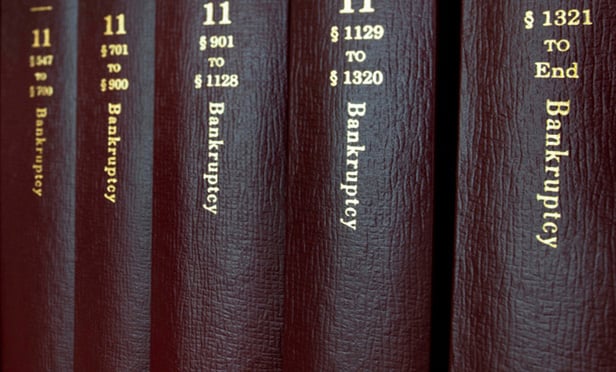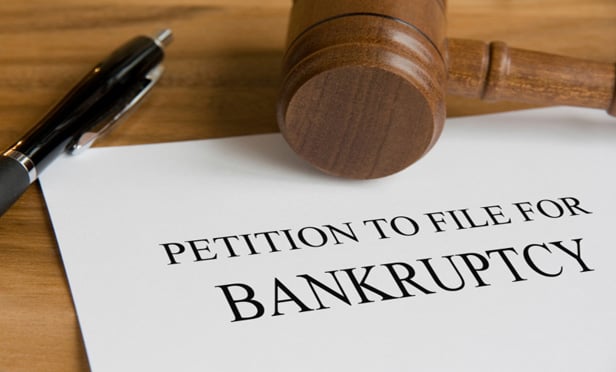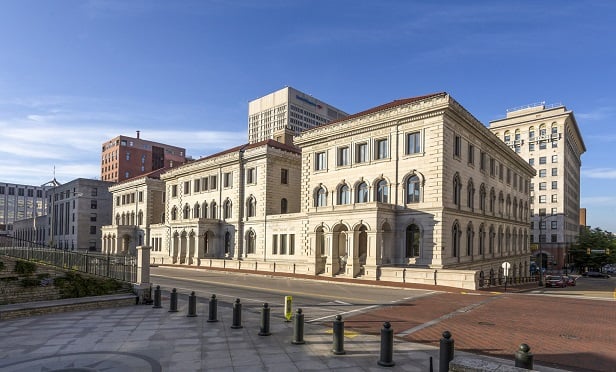Features

Pressing Issues for Landlords and Tenants In the Event of a WeWork Bankruptcy
This article discusses in substance the most pressing issues for both landlords and tenants in the event of a WeWork bankruptcy filing under the U.S. Bankruptcy Code.
Features

Bankruptcy Court Rules Contract to Produce Documentary Was Not a Personal Services Contract
Bankruptcy courts continue to adjudicate disputes regarding Section 365 of the Bankruptcy Code, which addresses the disposition of executory contracts between the debtor and third parties. And we continue to report on developments in this area. Often the issue involves whether the contract is an executory contract that is subject to being assumed and assigned.
Features

Bankruptcy Risk and Fraud In Cryptocurrency
Among the risks of cryptocurrency exchanges are bankruptcy risk and fraud, including: the inalienability of account claims, holding an unsecured claim versus an entitlement to the return of coin, and bankruptcy preference risk.
Features

Bankruptcy Court Says Bankruptcy Case Is 'Filed' When Uploaded, Not Stamped
The U.S. Bankruptcy Court for the Southern District of New York summed up the importance of the determination as to when a bankruptcy case is actually filed of record, thereby triggering the imposition of the automatic stay and found that the "upload" time of a bankruptcy filing — and not the time physically "stamped" on a bankruptcy petition — determines when a case is commenced. In doing so, the Bankruptcy Court offered direction and guidelines that debtors and creditors will be well advised to observe in future cases.
Features

Fourth Circuit Ruling Underscores Judicial Divide On Use of 'Texas Two-Step'
A sharply divided U.S. Court of Appeals for the Fourth Circuit ruling shielding a nondebtor in bankruptcy proceedings from asbestos lawsuits underscores the wider and growing divide among judges across the country on the bounds of Chapter 11 protection and corporations' use of the "Texas two-step" to address mass tort litigation.
Features

Novel Issues of Chapter 11 Mass Tort and Complex Claims Cases Impact Claims Against Unrelated Debtors
Chapter 11 cases involving mass tort and complex personal injury claims often require the resolution of novel legal issues that stretch the bounds of existing precedent. As these cases evolve, they can also impact claims against other debtors unrelated to the case at hand through court-approved injunctions, releases or settlements.
Features

After Dismissal of J&J's Second Talc Bankruptcy, Plaintiffs Lawyers Call for Consolidated Trials
With the dismissal of Johnson & Johnson's second talc bankruptcy, plaintiffs lawyers are doubling down on their plans to pursue trials across the country.
Features

Distressed Investors Should Take Advantage of the Upcoming Plethora of Defaulted CRE Loans
What is different about this distressed cycle is that most of the lenders are not foreclosing and taking title to the CRE assets, managing, and leasing them for a few months and then selling the properties. They are more likely to sell the note/mortgage rather than foreclose on the property. This presents a unique and interesting opportunity for astute distressed investors, who are experienced in acquiring mortgage notes secured by commercial property and in the arduous foreclosure and bankruptcy process,
Features

Evolution of Pre-Bankruptcy Planning Raises Questions of Good Faith
In recent years, as extensive pre-bankruptcy planning has evolved, bankruptcy filings frequently involve affiliates of larger companies, engineered with a structuring of liabilities in mind. The question of whether these targeted filings are for a legitimate bankruptcy purpose or should be dismissed has been the subject of significant high-profile litigation.
Features

How the Texas Two-Step Changes How Plaintiffs Litigate Mass Torts
By enabling defendants to shield themselves from mass tort liability, the "Texas Two-Step" is a new obstacle for plaintiffs pursuing mass tort cases against manufacturers of dangerous products.
Need Help?
- Prefer an IP authenticated environment? Request a transition or call 800-756-8993.
- Need other assistance? email Customer Service or call 1-877-256-2472.
MOST POPULAR STORIES
- The 'Sophisticated Insured' DefenseA majority of courts consider the <i>contra proferentem</i> doctrine to be a pillar of insurance law. The doctrine requires ambiguous terms in an insurance policy to be construed against the insurer and in favor of coverage for the insured. A prominent rationale behind the doctrine is that insurance policies are usually standard-form contracts drafted entirely by insurers.Read More ›
- A Lawyer's System for Active ReadingActive reading comprises many daily tasks lawyers engage in, including highlighting, annotating, note taking, comparing and searching texts. It demands more than flipping or turning pages.Read More ›
- The Brave New World of Cybersecurity Due Diligence in Mergers and Acquisitions: Pitfalls and OpportunitiesLike poorly-behaved school children, new technologies and intellectual property (IP) are increasingly disrupting the M&A establishment. Cybersecurity has become the latest disruptive newcomer to the M&A party.Read More ›
- Abandoned and Unused Cables: A Hidden Liability Under the 2002 National Electric CodeIn an effort to minimize the release of toxic gasses from cables in the event of fire, the 2002 version of the National Electric Code ("NEC"), promulgated by the National Fire Protection Association, sets forth new guidelines requiring that abandoned cables must be removed from buildings unless they are located in metal raceways or tagged "For Future Use." While the NEC is not, in itself, binding law, most jurisdictions in the United States adopt the NEC by reference in their state or local building and fire codes. Thus, noncompliance with the recent NEC guidelines will likely mean that a building is in violation of a building or fire code. If so, the building owner may also be in breach of agreements with tenants and lenders and may be jeopardizing its fire insurance coverage. Even in jurisdictions where the 2002 NEC has not been adopted, it may be argued that the guidelines represent the standard of reasonable care and could result in tort liability for the landlord if toxic gasses from abandoned cables are emitted in a fire. With these potential liabilities in mind, this article discusses: 1) how to address the abandoned wires and cables currently located within the risers, ceilings and other areas of properties, and 2) additional considerations in the placement and removal of telecommunications cables going forward.Read More ›
- Guidance on Distributions As 'Disbursements' and U.S. Trustee FeesIn a recent case from the Bankruptcy Court for the District of Delaware, In re Paragon Offshore PLC, the bankruptcy court provided guidance on whether a post-plan effective date litigation trust's distributions constituted disbursements subject to the U.S. Trustee fee "tax."Read More ›
